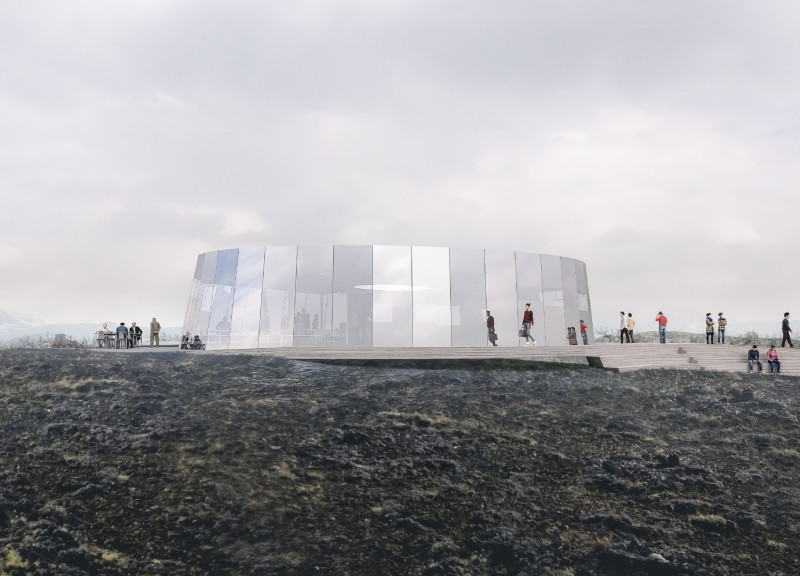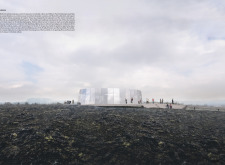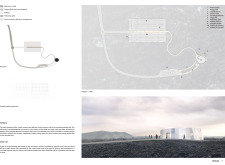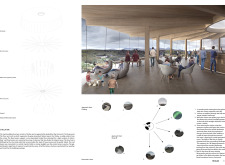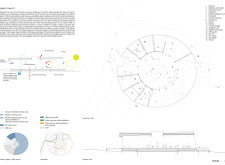5 key facts about this project
The design employs an elliptical form that carefully merges with the topography, reducing visual impact and allowing for unobstructed views of adjacent natural landmarks, including the Hverfjall volcano. This architectural approach demonstrates consideration for the environment, fostering an inviting space that encourages exploration and learning.
Use of Natural Materials and Sustainable Practices
The Hraun Visitor Center distinguishes itself through its commitment to sustainability and the use of natural materials. Glued-laminated timber beams form the structural framework, promoting durability while providing a warm aesthetic. Large glass facades enhance the connection between indoor and outdoor environments, facilitating visibility of the striking landscape. The building includes a green roof designed for biodiversity, effectively managing rainwater and reducing environmental impact.
Energy efficiency is also a core element of the architectural strategy. Featuring photovoltaic panels, geothermal heating, and natural ventilation methods, the center utilizes renewable energy sources, aligning with Iceland's sustainability initiatives. This focus on ecological responsibility not only minimizes operational costs but also educates visitors on sustainable practices.
Visitor Engagement and Accessibility
The Hraun Visitor Center supports a range of educational activities, serving as both a visitor hub and an exhibition space. The interior layout is designed for flexibility, accommodating groups of varying sizes. Thoughtful spatial organization facilitates movement and interaction, allowing guests to engage with exhibits that explore the geology, flora, and fauna of the area.
Accessibility is prioritized through adaptive pathways, ensuring that all visitors can fully experience the offerings of the center. The integration of informative displays and interactive elements enhances the educational journey, encouraging deeper contemplation of the natural environment.
To explore the Hraun Visitor Center further, including the architectural plans, sections, and unique design elements, consider reviewing detailed project presentations. This provides insights into the architectural ideas that shaped the design and how it functions within this unique geological context.


